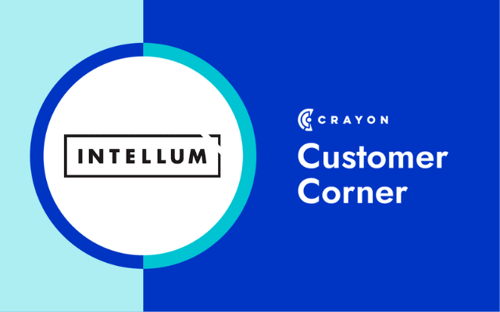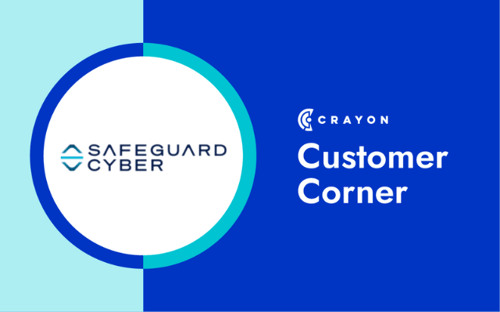
MC: What is your role?
JS: I’m the Senior Director of Product and Content Marketing at impact.com. I head up two major divisions within impact.com – the product marketing department and the content marketing department.
MC: What does impact.com do?
JS: impact.com is leading the charge in getting companies to recognize and tap into the tremendous potential of the partnerships economy. The partnership economy is the confluence of brands, service providers, publishers, and individuals who help each other generate value through collaboration across company borders. Through impact.com, companies can build out and scale up their own partnerships ecosystems and drive revenue and generate brand awareness through it.
Some of our most successful customers have matured their partnerships program to the extent that they contribute as much revenue as the traditional revenue channels of sales and marketing. Unlike many companies who solely rely on sales and marketing, which many consumers find inauthentic and less trustworthy (most people don’t like being sold or advertised to), the partnerships channel lets brands collaborate with individuals, entities, and publishers that consumers already trust to build awareness, education, consideration, and validation for their products and services.
MC: Tell me a little bit about your career path. What was your first job, and what else happened along the way to bring you to where you are now?
JS: I actually started my career in R&D, working as a developer and eventually managing developers for Oracle’s Business Intelligence product. At the time, I had some, but not a whole lot of interaction with the product marketing team. I decided to move more towards the business side, and went to business school at MIT Sloan and then spent a couple of years in management consulting, and then contracting for an ecommerce agency. These two experiences really helped me develop the business analysis, stakeholder management, communication, and program management skills necessary when sitting at the intersection of business and technology.
My first product marketing role was for an adtech company called Mediamind that had transformed itself from a rich media focused ad server into a full-fledged ad management solution for brands. At Mediamind, our product management team wasn’t in-market (they were based in Israel), so product marketing was really the outward-facing part of the product organization – interfacing directly with clients, sales, and client success to let them know about the latest innovations coming out of the product management org. There was also no sales enablement organization, so product marketing carried sales deck and asset creation and sales training responsibilities around product and feature releases. Mediamind had sales offices all over the globe, so one of the most fun aspects was visiting the different sales offices. We’d train the local teams and do roadshows to show sales how to deliver the new pitch, or lead live meetings alongside product management to do feature, roadmap, and messaging validation.
I stayed at Mediamind for about 5 years – by that time, they had rebranded to Sizmek, and I was running the product marketing team for their 12 creative and media-related products. The folks at impact.com reached out to me based on a former colleague’s recommendation. I was really intrigued by the space they occupied and was impressed by their calibre of people and technology, so I came onboard to help start up their product marketing discipline.
Product marketing at impact.com was quite different. Four years ago, it was still an immature discipline, and there was an established enablement department. There was also no formal marketing department, and product marketing’s initial focus was to help establish marketing as a major revenue channel for the organization. So I determined that the area where product marketing could provide the greatest value was around rapid positioning/messaging and asset creation to support our fledgling demand generation program. Over time, we established a robust content engine that fed a marketing machine that consistently hit its aggressive targets and sourced 30 to 40 percent of the company’s bookings each quarter. We also began supporting more and more of sales’ needs, from sales deck and data sheet creation, to first party data generation and competitive intelligence and battle card maintenance.
Today, I’m excited for us to focus on lighting up more product marketing capabilities as we build out the team. We’re focusing on formalizing our buyer personas and buyers’ journeys to identify additional opportunities for content and sales conversations. We’re ramping up our inbound marketing efforts so that our prospects can find us earlier in their journey – way before they know what impact.com does. And we’re doubling down on our go-to-market program management, to help the organization focus their efforts on the key areas that will move our business forward.
MC: What does a typical day at work look like for you?
JS: Well, as most folks in product marketing know, there’s no such thing as a typical day in product marketing. I always try to split my time equally between my product marketing and content marketing responsibilities – though since both teams are very well-integrated with each other, the line sometimes becomes blurry. Product marketers sometimes lay out the initial content strategy so that we have a good foundation for both our demand gen/account-based marketing and our inbound marketing initiatives, and content marketing is responsible for maintaining and evolving these strategies.
The team is getting larger, and different folks have varying levels of expertise in tackling the multitude of activities that the organization relies on the product marketing team to support. At any given point in time, I might be assisting the team on cross-departmental go-to-market initiatives, on narrative construction for a sales deck or a webinar deck with our CEO, on customer interviews for our next cool video testimonial or case study, on buyer persona/journey workshops with our client-facing teams, or more. Because we’re in rapid growth mode, I’m also spending a lot of time on finding and recruiting our next new great product marketer, product manager, or content marketer.
Outside of my managerial responsibilities, I also try to find some time for active thought leadership – which might involve collaborating with one of our clients, one of our executives, or doing independent research to build out our next great intellectual capital asset.
In our company, product marketing sits in the convergence of our product, sales, rev enablement, marketing, growth, client success, and partnerships team – and we’re often the go-to team for positioning and messaging, copy and asset creation, and situational responses to things that are happening in the industry.
MC: What role does competitive intelligence play in your organization’s success?
JS: It’s gotten a lot more vital. As more and more companies recognize the massive addressable market of the partnerships technology space, we’ve seen more and more market entrants. Conversely, as impact.com expands its product into new verticals, use cases, and markets, and acquires new companies, we’ve had to quickly familiarize ourselves with competitors in these new spaces.
We recognized that competitive intelligence should be treated more like a focused program, so we’ve recently hired a new product marketer. She is experienced in Crayon’s technology, and will lead the program and infuse it across all parts of the organization – not just sales and product marketing.
MC: How often should product marketers monitor their competitors’ activities?
JS: Ideally, light monitoring should be done weekly, but given that product marketers’ plates are often so full achieving other responsibilities under their purview, it’s really easy for competitive intelligence to fall by the wayside. This is tough, because you always need to keep battle cards up-to-date, otherwise they lose credibility with the sales teams. Having a tool that automates much of the workflows definitely helps a lot, but you still need to ensure that you’ve got the proper processes in place to keep the battle cards from going stale.
Depending on bandwidth and capacity, a monthly or quarterly cadence is more realistic, particularly for more involved analysis and for major battle card updates.
MC: How is your product marketing team organized?
JS: We like to keep the product marketing team focused on specific themes and competencies – that way, they are able to focus on becoming subject matter experts in specific domains and are in the best position to provide the education or consultative expertise needed for sales and marketing. Because the impact.com platform can be used to support numerous use cases across several verticals and audiences, it makes sense to divide responsibilities this way versus what you see in other organizations – which may have a single product marketer responsible for one or several products.
For instance,
- We’ve got a product marketer focused on our base case theme of affiliate marketing. He works closely with our sales and marketing team to ensure that we’ve got all the assets necessary to attract and win over clients who may only just be starting out with affiliate marketing, or may be looking at a SaaS platform like impact.com because they have been dissatisfied with their affiliate network. He also works with our onboarding, training, and client success teams to ensure that they’ve got what they need to help these types of customers uplevel their skills and know-how – not just on the product, but on non-product jobs-to-be-done as well, so that they have the knowledge they need to become better affiliate marketers.
- We also have a product marketer focused on our influencer theme – and they actually support this across two of our products: the main impact.com solution as well as one of our acquisitions, ACTIVATE. She understands the buyer’s journey, both for an affiliate manager diversifying their partnership program into influencers, as well as for an influencer marketer looking for an influencer management solution. Similar to the example above, she collaborates with sales, marketing, and client success to ensure that there is a solid go-to-market execution of this theme for both our prospects and our customers.
MC: What do you love most about product marketing?
JS: There’s never a dull moment in product marketing. You’re constantly working to solve new challenges, and because you have to become a subject matter expert in many areas. You are always learning – and you learn how to race up that learning curve as quickly as possible. Plus, the work you do matters a lot and touches so many different parts of the organization. You quickly figure out how to add as much value as possible, whether you’re working directly with the executive team, department leads, or individual sales reps, or client success managers.
MC: What’s a fun fact about you?
JS: I’m a huge travel buff, and I’ve been to about 40+ countries and territories and speak five languages. Being unable to travel during the pandemic has been quite tough, but I was lucky enough to get away to Europe recently to attend my sister’s wedding. Though mask wearing and vaccination checks were common in many establishments, it was really interesting to see how back-to-normal life appeared to be in both France and Italy – parks, sidewalks, cafes, and streets were packed with folks going about their daily lives.

Related Blog Posts
Popular Posts
-
 The 8 Free Market Research Tools and Resources You Need to Know
The 8 Free Market Research Tools and Resources You Need to Know
-
 How to Measure Product Launch Success: 12 KPIs You Should Be Tracking
How to Measure Product Launch Success: 12 KPIs You Should Be Tracking
-
 24 Questions to Consider for Your Next SWOT Analysis
24 Questions to Consider for Your Next SWOT Analysis
-
 How to Create a Competitive Matrix (Step-by-Step Guide With Examples + Free Templates)
How to Create a Competitive Matrix (Step-by-Step Guide With Examples + Free Templates)
-
 6 Competitive Advantage Examples From the Real World
6 Competitive Advantage Examples From the Real World




